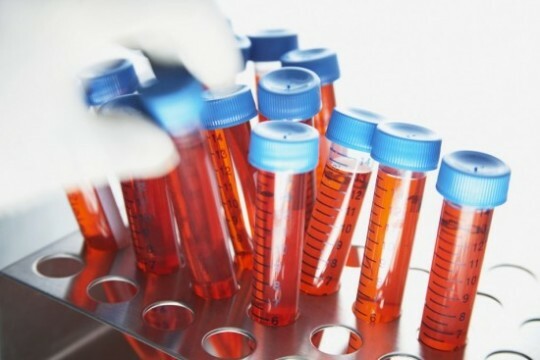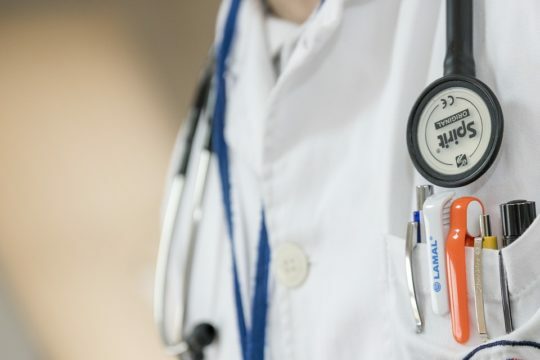A blood test for a sugar level is a laboratory test that is administered to anyone in a diagnostic examination. Assign this analysis not only for a planned examination of a patient who has come to the clinic, but also when examining the organs in the field of endocrinology, surgery, general therapy. The analysis is carried out in order to:
- to know the state of carbohydrate metabolism;
- find out common indicators;
- confirm or deny the presence of diabetes mellitus;
- to know the glucose values in humans.
If the sugar level has some deviation from the norm, analysis for glycated hemoglobin and for susceptibility to glucose ( two-hour test for sugar-loading test) can additionally be prescribed.
What is the norm of referential values?

You can find out the result of the analysis after the expiry of the day from the moment of blood sampling. If an urgent analysis is prescribed in a polyclinic( marked "cito!", Which means "fast"), the result of the analysis will be ready in a few minutes.
Normal blood sugar values in an adult range within from 3.88 to 6.38 mmol per liter .If the indicator exceeds the upper limit of the norm, this usually indicates the development of hyperglycemia or type 2 diabetes.
State, when the body lacks glucose, is called hypoglycemia. Low indicators, as well as overestimated, can testify not only about the disease, but also about some physiological indicators. Elevated blood sugar levels will be observed immediately after eating, and a lower level indicates a prolonged starvation. Also, short-term hypoglycemia can be observed in diabetics who have recently injected insulin.
In newborn infants, the norm varies within from 2.8 to 4.4 mmol per liter , and in older children is 3.3 to 5.5 mmol per liter .
All of the above values are often the same in the laboratory and diagnostic centers, but still some reference indicators may vary in different clinics, since diagnostic markers may be different. Therefore, the norm of values, in the first place, will depend on the laboratory.
When is the decryption considered incorrect?
False reference values and incorrect decoding are the result of poor human preparation for laboratory analysis.
The blood must be surrendered only in the morning on an empty stomach. Elevated levels may occur after severe nervous stress or grueling physical exertion.
In extreme conditions, the adrenal glands begin to work hard and release contrinulsory hormones, resulting in the release of a large amount of glucose from the liver, which enters the blood. Regular intake of certain types of medication can cause an increased sugar content in the blood.
Some diuretics( diuretics), thyroid hormones, estrogens, glucocorticosteroids, some non-steroidal analgesics raise the sugar level. Therefore, if a person regularly takes such medications or has recently taken before the analysis, the treating doctor should definitely inform about it. If there were no disturbing factors in the testing and preparation for it, deviations from the norm in the interpretation of the values require additional testing.
What should be the proper preparation for blood donation?

To obtain the most accurate result, you must carefully prepare for the delivery of tests. For this:
- one day before taking the test, you need to stop drinking alcohol;
- is allowed to use only clean water in the morning before surrender, and eight or twelve hours before the measurement of the indicator it is necessary to completely limit the consumption of food;
- is forbidden from the morning to brush your teeth, because the toothpaste contains a monosaccharide( glucose), which penetrates the oral mucosa into the body, can change the level of the value obtained( little is known about this rule);
- can not chew sutra chewing gum.
Blood is taken from the finger. You can find out your indicators and at home, but this requires a glucometer. The result is often inaccurate because test strips with reagents, when interacting with air, slightly oxidize, and this distorts the result.
Causes of increased content of
monosaccharide The causes of high blood sugar include:
- eating before taking;
- emotional, nervous, physical stress;
- diseases of the pituitary gland, adrenal glands, pineal gland, thyroid gland;
- epilepsy;
- pancreatic and digestive tract diseases;
- reception of some medicines( insulin, adrenaline, estrogen, thyroxine, diuretics, corticosteroids, glucocorticosteroids, nicotinic acid, indomethacin);
- carbon monoxide poisoning;
- development of diabetes.
Reasons for reduced
monosaccharide content The reduced content can usually indicate:
- a strong feeling of hunger;
- severe alcohol poisoning;
- diseases of the organs of the gastrointestinal tract( acute or chronic pancreatitis, enteritis, side effects, sometimes developing after surgery on the stomach);
- is a strong metabolic disorder in the human body;
- liver disease( obesity, cirrhosis);
- is an obvious form of obesity;
- tumorous neoplasms in the pancreas;
- disorders in vascular activity;
- disease of the central and peripheral nervous system, stroke;
- sarcoidosis;
- acute poisoning with rat poison or chloroform;
- in the presence of hyperglycemia, hypoglycemia develops after an overdose of exogenous insulin or sugar-reducing drugs. Also, a diabetic will experience hypoglycemia when vomiting after eating or because of skipping meals.
Subjective signs of increased glucose in the body

The increased content of monosaccharide in the body often leads to the development of diabetes of the first and second types. To signs of development of type 1 diabetes:
- strong and chronic thirst, the patient can drink about five liters of water per day;
- from the mouth of such a man smells strongly acetone;
- a person feels a constant feeling of hunger, eats a lot, but also greatly loses weight;
- because of the large amount of fluid being drunk, polyuria develops, a constant desire to emit the contents of the bladder, especially at night;
- any lesions on the skin do not heal well;
- skin on the body often itches, chronically fungus or furunculosis appears.
Very often, type 1 diabetes begins its development several weeks after a recently transferred virus disease( measles, rubella, influenza) or severe nervous shock. According to statistics, a quarter of those with type 1 diabetes do not notice any symptoms of the development of a terrible pathology. Often, happens that the person falls into the hyperglycemic coma , and only after that they diagnose him in the hospital - type 1 diabetes.
Symptomatic development of hyperglycemia of the second type
This disease develops in stages over a couple of years. Usually affects people closer to old age. The sick person constantly experiences deterioration of state of health, a state of weakness, wounds on the body do not heal well, vision deteriorates, memory suffers. Rarely does anyone think that this is the development of hyperglycemia, so it is usually diagnosed by patients accidentally. Symptoms are as follows:
- Memory problems, blurred vision, increased fatigue.
- Skin problems: itching, fungus, wounds do not heal well.
- Strong thirst + polyuria.
- In women, chronic thrush, which is difficult to treat.
- At the terminal stages of the disease a person begins to lose weight.
- There are ulcers on the legs, feet, it hurts to walk, legs numb, a tingling sensation is felt.
- In half of the diseased pathology is asymptomatic.
- Often, hyperglycemia can be accompanied by kidney disease, sudden strokes or heart attacks, loss of vision.



